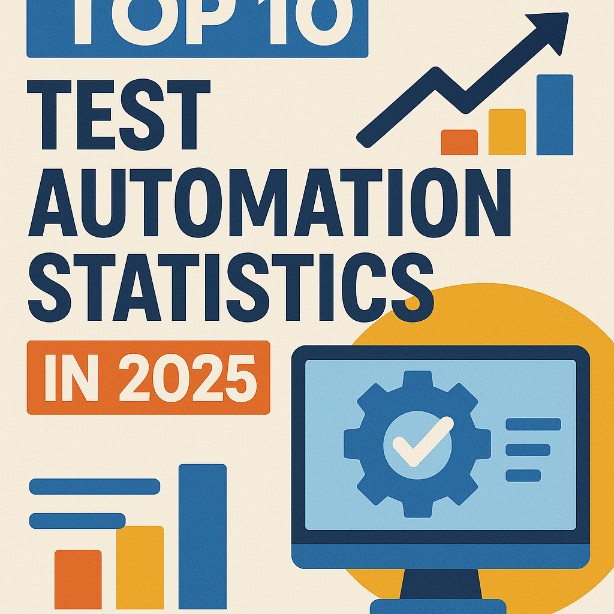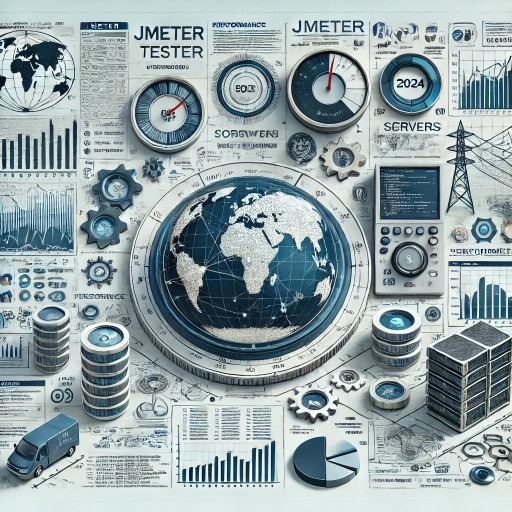In today’s fast-paced digital world, effective client collaboration is crucial to achieving project success. Whether you’re a non-technical business owner, software engineer, student, product owner, web agency, or DevOps professional, having the right tools can make all the difference. Collaboration tools streamline communication, organize workflows, and foster transparency, ensuring every stakeholder is on the same page.
In 2025, the number of available tools has expanded, with options catering to different needs, from simple project management to more advanced technical collaboration. This article will guide you through the best client collaboration tools, starting from user-friendly solutions and moving toward more technically robust systems for those seeking deeper integration.
Is Your Infrastructure Ready for Global Traffic Spikes?
Unexpected load surges can disrupt your services. With LoadFocus’s cutting-edge Load Testing solutions, simulate real-world traffic from multiple global locations in a single test. Our advanced engine dynamically upscales and downscales virtual users in real time, delivering comprehensive reports that empower you to identify and resolve performance bottlenecks before they affect your users.
Overview: The 10 Best Client Collaboration Tools in 2025
Here’s a quick look at the 10 best client collaboration tools in 2025. Each of these tools can be tailored to different business and project needs, offering a wide array of features that support smooth communication and project success.
- Slack – Real-time messaging and collaboration
- Trello – Visual task management
- Asana – For task management and project tracking
- Zoom – For remote meetings and video conferencing
- Google Workspace – Integrated apps for document collaboration
- Monday.com – Workflow automation and team collaboration
- Notion – All-in-one workspace for teams
- Jira – For agile project management and issue tracking
- LoadFocus – Cloud-based load testing and monitoring (Best for developers and performance testers)
1. Slack – Real-Time Messaging and Collaboration
Slack is a widely-used messaging platform that integrates seamlessly with other tools. It’s an essential tool for real-time communication, enabling teams to chat, share files, and collaborate in different channels. It’s suitable for small teams and large organizations alike.
Key Features
- Channels for team and project-based communication
- File sharing and integration with Google Drive, Dropbox, etc.
- Video conferencing for quick meetings
- Great for quick updates and feedback
2. Trello – Visual Task Management
Trello is a simple, visual way to manage projects and tasks. Using a system of boards, lists, and cards, teams can easily track the progress of their work. Trello’s flexibility makes it an excellent tool for non-technical users, while its integration options are a bonus for more advanced teams.
Think your website can handle a traffic spike?
Fair enough, but why leave it to chance? Uncover your website’s true limits with LoadFocus’s cloud-based Load Testing for Web Apps, Websites, and APIs. Avoid the risk of costly downtimes and missed opportunities—find out before your users do!
Key Features
- Drag-and-drop interface for easy task management
- Integrates with Slack, Google Workspace, and more
- Customizable workflows and templates
3. Asana – Task Management and Project Tracking
Asana offers more robust project tracking than Trello, with a focus on tasks, subtasks, and timelines. It’s ideal for businesses looking to scale their project management efforts with structured task dependencies.
Key Features
- Task assignment with due dates
- Timeline and Gantt chart views
- Built-in collaboration for comments and file sharing
4. Zoom – For Remote Meetings and Video Conferencing
Zoom has become a staple for remote collaboration. Whether you’re conducting meetings, webinars, or screen sharing, Zoom offers a reliable and easy-to-use platform for staying connected with your clients and teams from anywhere in the world.
Key Features
- HD video and audio conferencing
- Breakout rooms for smaller discussions
- Recording features for meetings and webinars
5. Google Workspace – Integrated Apps for Document Collaboration
Google Workspace provides a suite of tools like Google Docs, Sheets, and Drive to facilitate document collaboration. It’s the go-to for businesses that need cloud-based document editing, real-time collaboration, and secure file storage.
Key Features
- Real-time collaboration on documents, sheets, and presentations
- Seamless integration with Gmail and Calendar
- Team Drive for centralized file management
6. Monday.com – Workflow Automation and Team Collaboration
Monday.com offers a powerful platform that goes beyond simple task management. It’s built for businesses that need automated workflows, visual tracking, and customizations. Monday.com is great for mid-sized to large teams that require more complex workflows.
LoadFocus is an all-in-one Cloud Testing Platform for Websites and APIs for Load Testing, Apache JMeter Load Testing, Page Speed Monitoring and API Monitoring!
Key Features
- Highly customizable workflows
- Automation for routine tasks
- Real-time collaboration and data visualization
7. Notion – All-in-One Workspace for Teams
Notion combines note-taking, project management, and database creation in one tool. It’s highly customizable and perfect for teams that want to centralize their knowledge base, manage projects, and document their processes.
Key Features
- Knowledge base creation
- Task management with nested tasks and databases
- Integration with external tools for seamless workflows
8. Jira – Agile Project Management and Issue Tracking
Jira is built for software development teams working in an Agile environment. It’s perfect for DevOps, software engineers, and product owners needing to track bugs, manage releases, and monitor sprints.
Key Features
- Issue tracking and backlog management
- Agile boards for Scrum and Kanban
- Advanced reporting for sprint planning
9. LoadFocus – Cloud-Based Load Testing and Monitoring
LoadFocus is an ideal tool for developers and performance testers who need to conduct cloud-based load testing. LoadFocus provides insightful data on how web applications and websites perform under different load conditions, making it a perfect client collaboration tool for DevOps teams aiming to optimize performance.
Key Features
- Cloud-based load and performance testing
- Monitoring for real-time insights
- Integration with CI/CD pipelines for seamless automation
- Comprehensive reports for client communication
Frequently Asked Questions
What is an example of client collaboration?
Client collaboration involves working closely with a client to share progress, gather feedback, and adjust work based on their input. For example, a team using Trello can assign tasks to clients, update them on project status, and communicate directly through comments and task updates.
What is an example of a collaboration tool?
Slack is a popular example of a collaboration tool. It allows teams to communicate in real-time through channels, direct messages, and integrates with other tools like Google Drive and Asana for seamless collaboration.
What are the 3 types of collaboration software?
- Communication tools – like Slack for messaging.
- Project management tools – like Trello and Asana for task tracking.
- File-sharing tools – like Google Workspace for collaborative document editing.
What is a customer collaboration platform?
A customer collaboration platform enables teams and clients to work together efficiently. Examples include tools like Slack, where customers and service providers can communicate, and Trello, where clients can track the progress of their projects.
What is 1 example of collaboration as a skill?
Collaboration as a skill involves working with others to achieve shared goals. For example, actively listening to a client’s feedback during a meeting and incorporating their ideas into your next steps demonstrates effective collaboration.
What is a short example of collaboration?
A short example of collaboration is using Google Docs to edit a proposal in real-time, with both team members and clients contributing ideas simultaneously.
In conclusion, client collaboration tools are essential for any business looking to improve communication and streamline workflows. With options ranging from simple task management tools like FocusBox to more advanced technical solutions like LoadFocus, there’s a tool for every team. You can also easily import templates, customize them to your needs, add new tasks and subtasks with AI, and even change the background or ambient sound to make work more engaging.




![9 Best IT Incident Management Software [2025] 9 Best IT Incident Management Software [2025]](https://loadfocus.com/blog/wp-content/uploads/sites/5/2024/08/it-management-tools.jpg)
